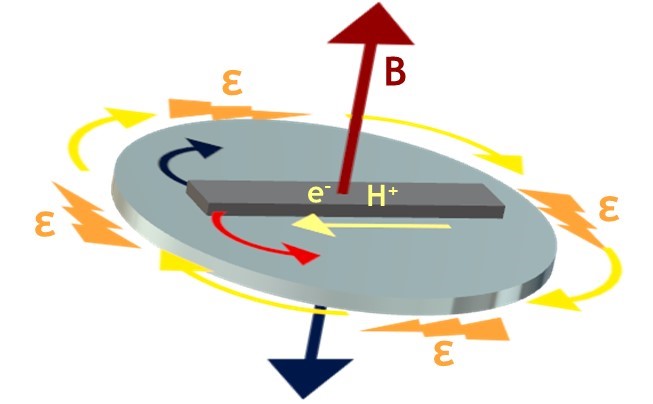K. Tieriekhov, N. Sojic, L. Bouffier, G. Salinas, A. Kuhn
Adv. Science 11 (2024) 2306635
Electromagnetically induced rotation is a key process of many technological systems that are used in daily life, especially for energy conversion. In this context, the Lorentz force-induced deviation of charges is a crucial physical phenomenon to generate rotation. Herein, we combine the latter with the concept of bipolar electrochemistry to design a wireless magnetoelectrochemical rotor. Such a device can be considered as a wet analogue of a conventional electric motor. The main driving force that propels this actuator is the result of the synergy between the charge-compensating ion flux along a bipolar electrode and an external magnetic field applied orthogonally to the surface of the object. The trajectory of the wirelessly polarized rotor can be controlled by the orientation of the magnetic field relative to the direction of the global electric field, producing a predictable clockwise or anticlockwise motion. Fine-tuning of the applied electric field allows addressing conducting objects having variable characteristic lengths.







